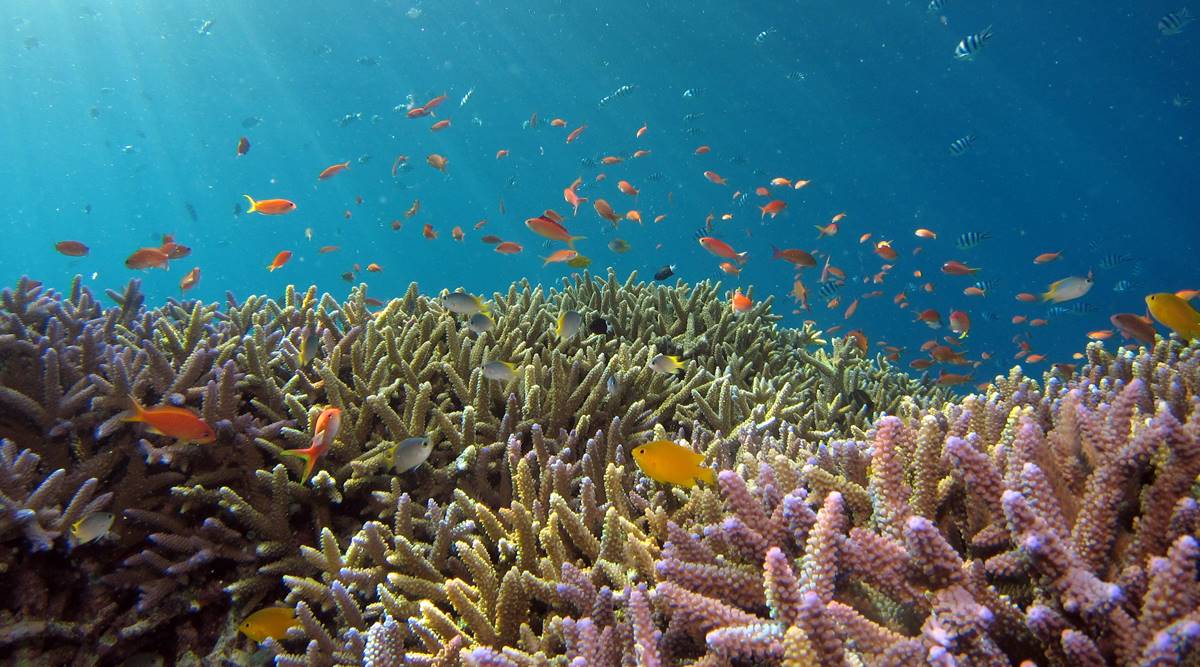 The Rs 4,000-crore mission, announced last year, aims to improve the understanding of oceans, their biodiversity, climate change along with the development and demonstration of technology to undertake future ocean explorations.(Unsplash/ Representational)
The Rs 4,000-crore mission, announced last year, aims to improve the understanding of oceans, their biodiversity, climate change along with the development and demonstration of technology to undertake future ocean explorations.(Unsplash/ Representational) Ministry of Earth Sciences Secretary M Ravichandran on Monday said that the Deep Ocean Mission will help strengthen observations over the Indian Ocean as the country has over the years benefitted from these them for its statistical and dynamical monsoon forecast modelling.
Ravichandran was addressing the inaugural session of the International Indian Ocean Conference (IIOC) 2022 jointly organised by the Council of Scientific and Industrial Research (CSIR), National Institute of Oceanography and Indian National Centre for Ocean Information Services (INCOIS).
The Rs 4,000-crore mission, announced last year, aims to improve the understanding of oceans, their biodiversity, climate change along with the development and demonstration of technology to undertake future ocean explorations. This five-year inter-ministerial and inter-departmental mission will see collaboration between the Ministry of Earth Sciences, Indian Space Research Organisation (ISRO), Defence Development and Research Organisation (DRDO), Department of Atomic Energy (DAE), Council of Scientific and Industrial Research (CSIR), Department of Biotechnology (DBT) and the Indian Navy.
“The mission will facilitate a dedicated observational system to capture long term changes in ocean climatic conditions while sustaining and augmenting the existing network of moored buoys, argo floats and drifters,” said Ravichandran.
As part of the mission, eight deep ocean gliders, 48 argo floats, 150 wave drifters will be added to the existing observational network in addition to regular scientific cruises planned in the coming years.
Recalling how the Indian Ocean region, around 20 years ago, was under-observed in comparison to Pacific or Atlantic Oceans, the ministry secretary said: ” But now, we have observations at par with other oceans. Yet, it remains understudied. We still need to understand various processes and linkages of the Indian Ocean with the other oceans.”
While the Pacific and Atlantic Oceans have better observational networks, the Indian Ocean got prominence following the establishment of the International Indian Ocean Expedition. Following this, several interdisciplinary oceanographic research with participation from more than 13 countries using 40 research vessels surveyed during 1962-1965 along the Indian Ocean — covering a total area of 71 million square kilometres. The second phase was launched in December 2015 and has supported 71 research projects from over 19 countries.
Besides, the soon-to-be-launched Oceansat 3 will further boost observations and facilitate both in-situ and satellite-based observations, the ministry secretary said.
Assuring India’s continuing participation in all major research, Ravichandran said: “India is a key stakeholder participating in the activities of the International Indian Ocean Expedition, be it for carrying out ocean observations, data management, hazards and forecasting, capacity building. The MoES will continue to support all other countries in converting science to services for the betterment of humanity.”
The conference concludes on March 18.
- The Indian Express website has been rated GREEN for its credibility and trustworthiness by Newsguard, a global service that rates news sources for their journalistic standards.

